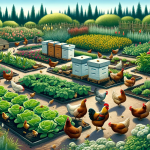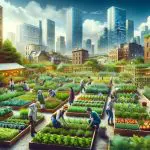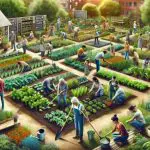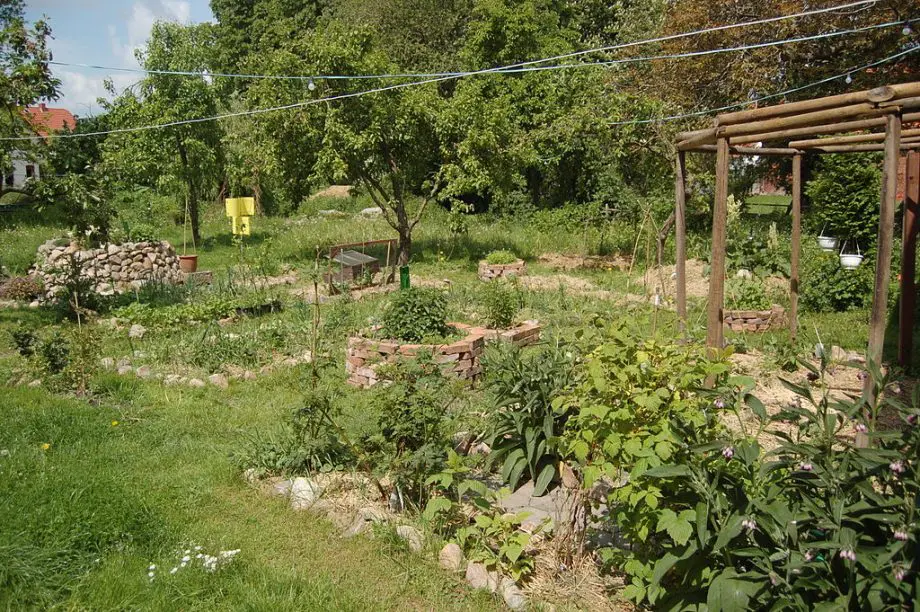
Why is regenerative agriculture important? Discover how it revolutionizes farming for a sustainable future. Unearth its environmental and economic benefits!
Regenerative Agriculture Key Takeaways:
- The importance of regenerative agriculture lies in its ability to restore soil health and enhance biodiversity.
- It reduces greenhouse gas emissions and improves water management.
- It offers a sustainable solution for environmental challenges.
- It supports farmer livelihoods and community resilience.
Ever wondered why regenerative agriculture is important? It’s the game-changer we need for a greener planet!
Dive in as we unfold how this innovative approach is revolutionizing farming, nurturing our environment, and empowering communities.
It’s a journey towards a sustainable, healthier world, and you’re invited!
Why is Regenerative Agriculture Important?
Understanding the Significance of Regenerative Agriculture
In an era where sustainable practices are more crucial than ever, regenerative agriculture emerges as a beacon of hope.
It’s not just about growing food; it’s a revolutionary approach that intertwines environmental rejuvenation, social equity, and economic viability.
This method of farming goes beyond mere sustainability as it actively works to repair and enhance the ecosystems it touches.
In this comprehensive guide, we delve into why regenerative agriculture holds the key to a more resilient and healthy planet.
What is Regenerative Agriculture?
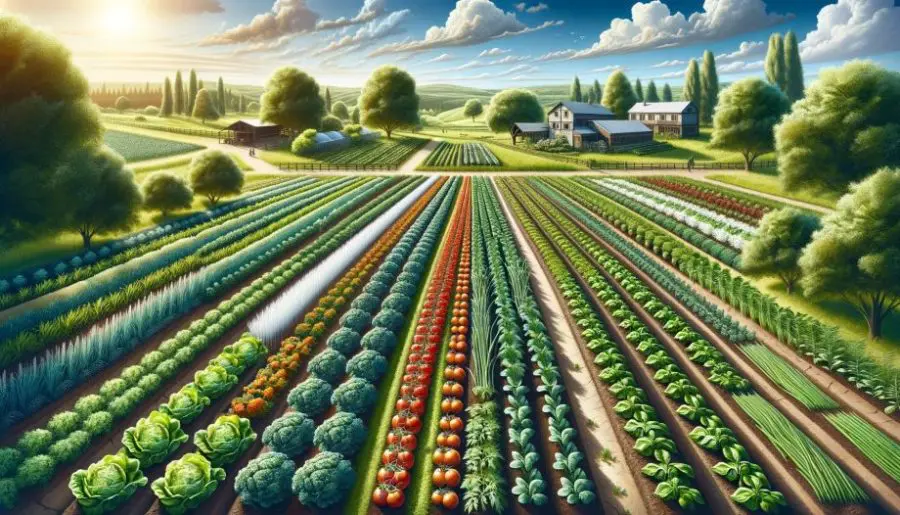
The Philosophy and Approach of Regenerative Agriculture
Regenerative agriculture represents a paradigm shift in farming and land management.
It extends beyond the conventional goals of production and profit, embracing a holistic view that interconnects soil health, ecosystem balance, and community well-being.
This approach not only acknowledges but leverages the intricate web of relationships in nature to foster a more sustainable and productive environment.
Regenerative agriculture is a conservation and rehabilitation approach to food and farming systems. It focuses on topsoil regeneration, increasing biodiversity,[1] improving the water cycle,[2] enhancing ecosystem services, supporting biosequestration,[3] increasing resilience to climate change, and strengthening the health and vitality of farm soil. From Wikipedia
Core Principles of Regenerative Agriculture
At its core, regenerative agriculture focuses on several key principles:
- Soil Health: Prioritizing the nurturing and restoration of soil fertility and biodiversity.
- Water Management: Enhancing water retention and quality, thereby supporting drought resilience.
- Biodiversity: Encouraging diverse plant and animal life to maintain ecosystem balance.
- Carbon Sequestration: Utilizing natural processes to capture atmospheric carbon, mitigating climate change.
- Farmer and Community Well-being: Ensuring fair practices and enhancing the livelihoods of those involved in the agricultural process.
These principles collectively contribute to a more resilient and sustainable agricultural system.
Read more: 5 Principles of Regenerative Agriculture: Epic Earth Care – Sustainably Forward
The Environmental Benefits of Regenerative Agriculture
Revitalizing Soil and Ecosystems
Regenerative agriculture plays a pivotal role in restoring soil health and ecosystem vitality.
Employing practices such as cover cropping and reduced tillage enhances soil structure, fertility, and microbial activity.
This leads to improved crop yields and resilience against pests and diseases.
Combatting Climate Change
A key advantage of regenerative agriculture is its ability to combat climate change.
Through practices like carbon sequestration and reduced reliance on fossil-fuel-based inputs, it significantly lowers greenhouse gas emissions.
This proactive approach to farming can be a critical component in global efforts to tackle climate issues.
Preserving Water Resources
Effective water management is another hallmark of regenerative farming.
Techniques such as mulching and conservation tillage increase the soil’s water-holding capacity, reducing the need for irrigation and protecting waterways from agricultural runoff.
Economic Advantages for Farmers and Communities
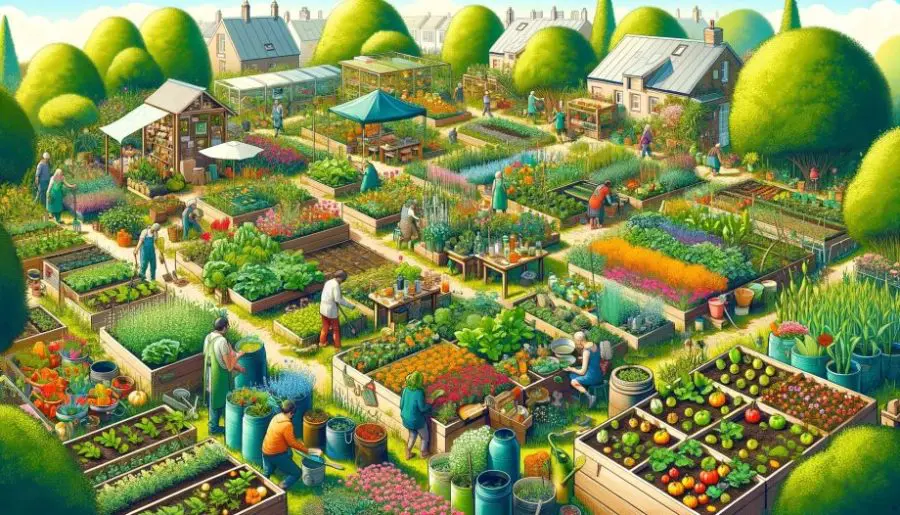
Regenerative agriculture isn’t just environmentally progressive; it’s economically transformative too.
By adopting these practices, farmers can unlock a treasure trove of benefits that not only bolster their own financial stability but also invigorate the communities they serve.
Boosting Farm Productivity and Profitability
Enhanced Crop Yields
Healthy soil is the bedrock of productive farming. Regenerative practices enrich soil health, leading to higher crop yields.
This not only benefits farmers through increased production but also contributes to global food security.
Reduced Input Costs
A significant advantage of regenerative agriculture is the reduction in the need for costly inputs.
By utilizing natural processes and reducing dependency on synthetic fertilizers and pesticides, farmers can substantially cut down their expenses.
Diversification of Income Streams
Regenerative agriculture opens doors to diverse income streams. Practices like agroforestry and mixed cropping systems provide multiple products for the market, enhancing farmers’ financial resilience.
Strengthening Community Economies
Supporting Local Employment
Regenerative farms often require more hands-on management, thereby creating local employment opportunities.
This not only aids in community development but also strengthens the bond between consumers and their food sources.
Encouraging Sustainable Rural Development
By prioritizing ecological health and fair labor practices, regenerative agriculture lays the foundation for sustainable rural development.
It fosters a community-centric approach, ensuring that the benefits of farming extend beyond the farm gates to uplift entire communities.
Regenerative Agriculture in Practice

Regenerative agriculture is not a one-size-fits-all solution; it adapts to local environments and needs. However, certain practices are commonly employed to achieve its objectives.
Implementing Regenerative Techniques
Embracing No-Till Farming
A cornerstone of regenerative agriculture is minimizing soil disturbance.
No-till farming, where the soil is left undisturbed, helps maintain soil structure, preserve microbial life, and reduce erosion.
Utilizing Cover Crops
Cover crops play a vital role in regenerative agriculture.
They cover the soil, preventing erosion, enhancing soil fertility, and suppressing weeds.
This practice also supports water retention and biodiversity.
Promoting Crop Diversity
Diversity is key in regenerative farming.
Rotating different crops and integrating multiple species enhances soil health, breaks pest cycles, and increases resilience against diseases.
Integrating Livestock
Regenerative agriculture often involves integrating livestock into crop systems.
Practices like rotational grazing help manage land naturally, improve soil fertility, and promote a balanced ecosystem.
The Road to Transition
The journey to fully implement regenerative practices can be challenging.
It often involves a transition period where farmers adapt their operations and learn new techniques.
Understanding these challenges is crucial to appreciate the process fully.
Social and Health Implications of Regenerative Agriculture
Regenerative agriculture transcends environmental and economic realms, profoundly impacting the social and health aspects of the communities involved.
Enhancing Community Well-being and Social Equity
Building Stronger Communities
Regenerative agriculture fosters a sense of community through shared knowledge and resources.
Encouraging local food systems, strengthens the bond between producers and consumers, creating a more interconnected and supportive community structure.
Addressing Social Inequities
This approach to agriculture acknowledges and addresses historical injustices in the agricultural sector.
By promoting fair labor practices and equitable resource distribution, regenerative agriculture plays a role in rectifying social disparities.
Health Benefits: Beyond the Farm
Mental and Physical Health Advantages
Farmers practicing regenerative agriculture often report a greater sense of fulfillment and well-being.
Additionally, by reducing harmful chemicals, this farming method contributes to improved physical health for both farm workers and consumers.
Producing Nutrient-Dense Foods
Regenerative practices lead to the production of more nutrient-dense foods. Healthier soils translate to healthier plants, ultimately benefiting those who consume these products.
Challenges and Future of Regenerative Agriculture
While regenerative agriculture offers numerous benefits, it’s not without its challenges.
Understanding these obstacles is crucial for its successful implementation and future development.
Navigating the Transition to Regenerative Practices
Overcoming Initial Hurdles
The shift to regenerative agriculture can be daunting, especially for traditional farmers.
Initial challenges include adapting to new farming techniques, managing short-term yield variability, and incurring upfront costs for new equipment or practices.
The Learning Curve
There is a significant learning curve involved in adopting regenerative practices.
Farmers must acquire new skills and knowledge, which can be time-consuming and require additional resources.
The Scalability and Profitability Question
Is Regenerative Agriculture Scalable?
One of the key debates surrounding regenerative agriculture is its scalability.
Can these practices be effectively implemented on a large scale to meet the global food demand?
This question is central to its future prospects.
Profitability for Farmers
The economic viability of regenerative agriculture is another area of concern.
While long-term benefits are clear, ensuring short-term profitability for farmers during the transition phase is essential for its widespread adoption.
The Path Forward
Addressing Climate Change and Food Security
Looking ahead, regenerative agriculture has the potential to play a pivotal role in addressing climate change and ensuring food security.
Its practices not only contribute to environmental health but also support the production of sufficient, nutritious food for a growing population.
Embracing Innovation and Collaboration
The future of regenerative agriculture lies in embracing innovation and fostering collaboration among farmers, researchers, policymakers, and consumers.
This collective effort is key to overcoming challenges and realizing the full potential of regenerative practices.
FAQs About Regenerative Agriculture
Regenerative agriculture, with its multifaceted impact, naturally raises many questions.
From its effectiveness in solving environmental problems to its implications for the future of our land, these FAQs aim to provide clarity and deepen understanding of this important subject.
Q: What problems does regenerative agriculture solve?
A: Regenerative agriculture tackles a variety of environmental issues, including soil degradation, loss of biodiversity, and climate change.
By rejuvenating soil health, enhancing biodiversity, and sequestering carbon, it offers a comprehensive approach to some of the most pressing ecological challenges.
Q: What is the importance of regenerative agriculture?
A: The importance of regenerative agriculture lies in its holistic approach.
It’s not just about food production; it’s about ecosystem restoration, biodiversity enhancement, water cycle improvement, climate balance, and support for farmer and community health.
Q: Can regenerative agriculture save the world?
A: While regenerative agriculture alone isn’t a complete solution, it’s a significant step towards sustainable land management.
Its potential to mitigate climate change, restore land health, and improve food security makes it an essential element in efforts towards a sustainable future.
Q: How is regenerative agriculture going to help the future of our land?
A: Regenerative agriculture contributes to the future of our land by improving soil fertility, increasing water retention, and fostering ecological balance.
These benefits lead to healthier land capable of sustaining future generations.
Q: What are 5 benefits of regenerative agriculture?
A: The top five benefits include:
- 1) Enhanced soil health,
- 2) Increased biodiversity,
- 3) Improved water management,
- 4) Carbon sequestration, and
- 5) Strengthened farmer and community resilience.
Q: How effective is regenerative agriculture?
A: Regenerative agriculture is highly effective in restoring soil health, reducing dependency on synthetic inputs, and improving ecosystem services.
Its effectiveness is increasingly recognized in both small-scale and larger agricultural settings.
Q: How does regenerative agriculture help farmers?
A: It helps farmers by improving soil fertility, reducing input costs, increasing crop yields, and providing more sustainable and diversified income streams.
Q: What are the benefits of regenerative gardening?
A: Regenerative gardening benefits include improved soil health, increased biodiversity in home gardens, enhanced nutrient density in homegrown foods, and a reduction in the carbon footprint of gardening practices.
Q: Is regenerative agriculture healthier?
A: Yes, regenerative agriculture leads to the production of healthier, more nutrient-rich foods.
It also reduces exposure to harmful chemicals, benefiting both environmental and human health.
Conclusion: The Vital Role of Regenerative Agriculture in Shaping a Sustainable Future
As we reach the end of our exploration into regenerative agriculture, it’s clear that this approach is more than just a farming method.
It’s a vital pathway toward a sustainable, resilient, and equitable future.
Let’s encapsulate the key takeaways and reflect on the broader implications of this transformative practice.
A Beacon of Hope for Environmental Restoration
Regenerative agriculture stands as a powerful tool in our fight against climate change and environmental degradation.
By revitalizing soil health, promoting biodiversity, and reducing greenhouse gas emissions, it offers a proactive solution to some of the most critical ecological issues facing our planet.
Economic and Social Empowerment
Beyond environmental benefits, regenerative agriculture paves the way for economic resilience and social equity.
It supports farmer livelihoods, fosters community development, and contributes to fair and sustainable food systems.
This approach goes a long way in creating a more just and equitable agricultural sector.
The Path Forward: Embracing a Regenerative Future
The journey towards widespread adoption of regenerative practices requires collaboration, innovation, and commitment.
By continuing to educate, invest, and advocate for these practices, we can collectively work towards a future where agriculture not only sustains but regenerates our world.
A Call to Action
The importance of regenerative agriculture cannot be overstated. It’s a call to action for farmers, policymakers, consumers, and communities to embrace and support these practices.
Together, we can forge a path towards a healthier, more sustainable, and just world for current and future generations.
Regenerative agriculture is not just a choice; it’s a necessity for the future well-being of our planet and its inhabitants.
Its implementation and success depend on our collective efforts and commitment to a more regenerative, resilient, and equitable world.

